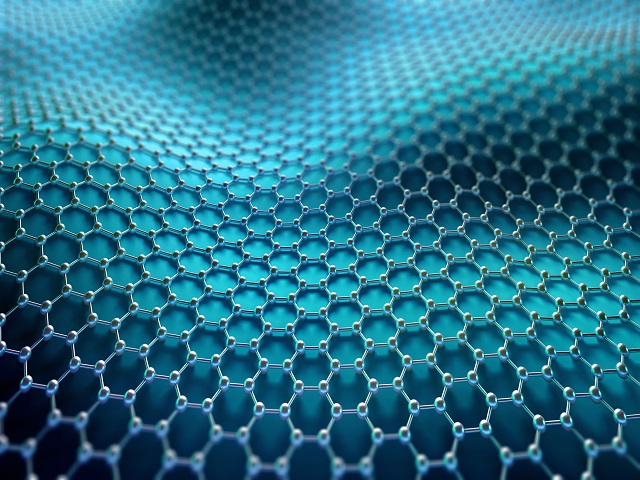Feb 17 2016
 Image Credit - Ktsdesign/Shutterstock.com
Image Credit - Ktsdesign/Shutterstock.com
Chemists from the University of Texas at Arlington have created new high-performing materials to develop cells that utilize sunlight to separate water and carbon dioxide into useable fuels, such as hydrogen gas and methanol. These “green fuels” are used for home appliances and to store energy in batteries and power cars.
Technologies that simultaneously permit us to remove greenhouse gases like carbon dioxide while harnessing and storing the energy of sunlight as fuel are at the forefront of current research. Our new material could improve the safety, efficiency and cost-effectiveness of solar fuel generation, which is not yet economically viable.
Professor Krishnan Rajeshwar, Chemistry and Biochemistry, UTA
The hybrid platform uses extremely long carbon nanotube networks, coated with copper oxide nanocrystals. It exhibits the photocathode qualities of copper oxide and the high electrical conductivity of carbon nanotubes. The platform efficiently transforms light into the photocurrents, which are required for the photoelectrochemical reduction process.
Morteza Khaledi, dean of the UTA College of Science, stated that Rajeshwar’s work represents the University’s dedication to address complex problems with global environmental impact under the Strategic Plan 2020.
Dr. Rajeshwar’s ongoing, global leadership in research focused on solar fuel generation forms part of UTA’s increasing focus on renewable and sustainable energy. Creating inexpensive ways to generate fuel from an unwanted gas like carbon dioxide would be an enormous step forward for us all.
Morteza Khaledi, Dean of the College of Science, UTA
The solar fuel cells project was carried out by Rajeshwar with Csaba Janáky, an assistant chemistry professor at the University of Szeged in Hungary, and Janáky’s master’s student Egon Kecsenovity. Janaky worked as a UTA Marie Curie Fellow from 2011 to 2013.
The findings were reported in a Feb. 15 minireview, “Electrodeposition of Inorganic Oxide/Nanocarbon Composites: Opportunities and Challenges,” in ChemElectroChem Europe and in a companion article titled, “Decoration of ultra long carbon nanotubes with Cu2O nanocrystals: a hybrid platform for photoelectrochemical CO2 reduction,” in Journal of Materials Chemistry A.
The performance of our hybrid has proved far superior to the properties of the individual materials. These new hybrid films demonstrate five-fold higher electrical conductivity compared to their copper oxide counterparts, and generate a three-fold increase in the photocurrents needed for the reduction process.
Professor Krishnan Rajeshwar, Chemistry and Biochemistry, UTA
The newly developed material is more stable during long-term photoelectrolysis than pure copper oxide, which gets destroyed overtime and forms metallic copper.
The research focused on forming a multi-step electrodeposition process to confirm that a homogeneous coating of copper oxide nanoparticles was placed on the carbon nanotube networks. Researchers were able to detect the efficiency of the new material by adjusting the amount of electrodeposited copper oxide and the thickness of the carbon nanotube film.
Rajeshwar is currently working on a project with NASA to create enhanced techniques for recovery and reuse of oxygen aboard human spacecraft. For this project, Rajeshwar has collaborated with Norma Tacconi, a research associate professor of chemistry and biochemistry, and Brian Dennis, a UTA associate professor of mechanical and aerospace engineering.
The team focuses on creating, constructing, and demonstrating a “microfluidic electrochemical reactor”, which helps to recover oxygen from carbon dioxide obtained from cabin air. Within the next few months, the team is planning to construct the prototype at the Center for Renewable Energy Science and Technology at UTA.
Rajeshwar enrolled in the College of Science in 1983. He is a charter member of the UTA Academy of Distinguished Scholars and the senior vice president of The Electrochemical Society, an organization representing the nation’s leading researchers who focus their research on improving technology, electrochemical science and solid state.
Rajeshwar specializes in conducting polymers, electrochemistry, nanocomposites, and photoelectrochemistry. He has received awards like the Energy Technology Division Research Award of the Electrochemical Society and the Wilfred T. Doherty Award from the American Chemical Society.
Rajeshwar obtained his Ph.D in chemistry from the Indian Institute of Science in Bangalore, India, and completed his post-doctoral training in Colorado State University.